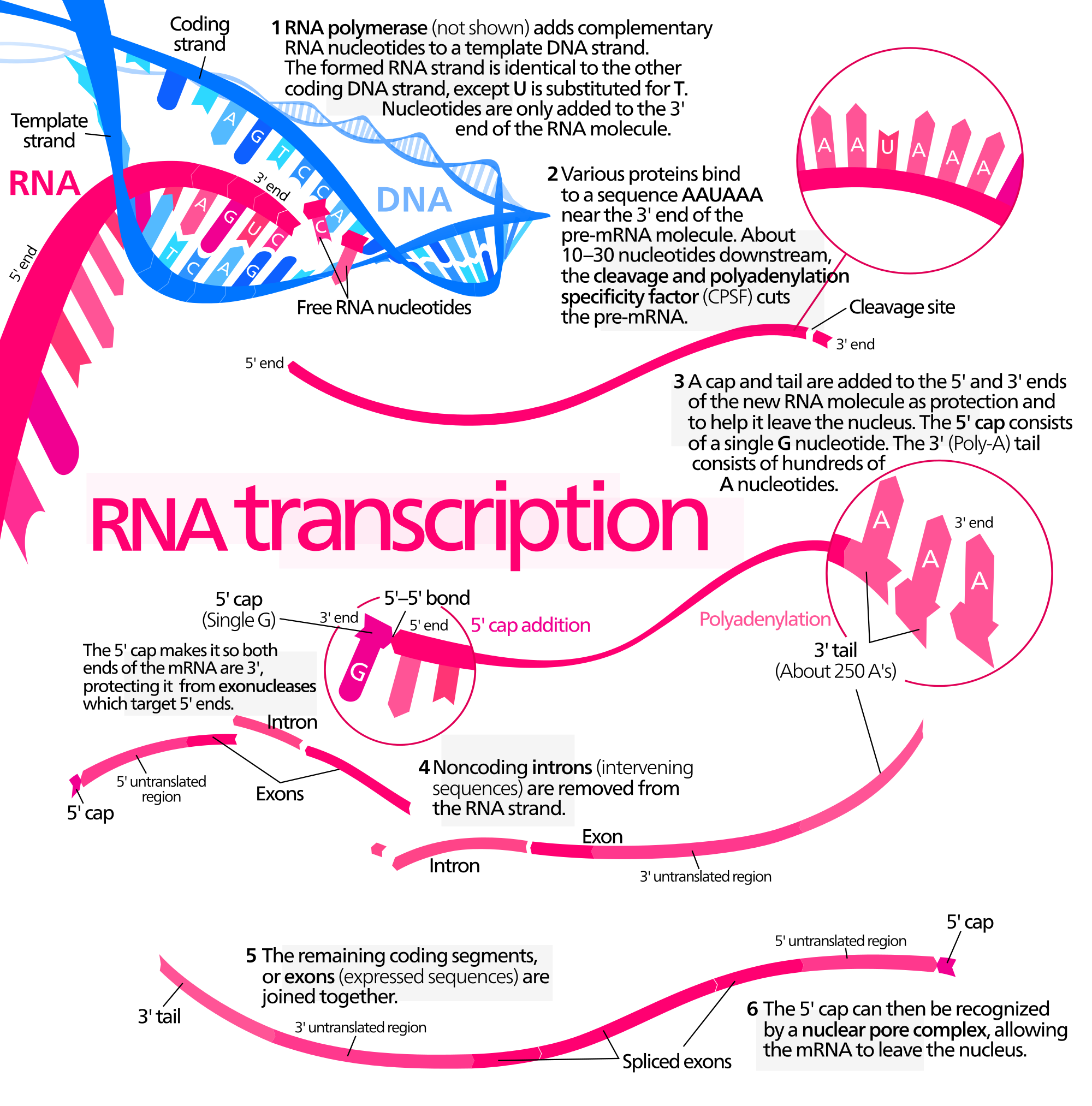Transcription is the first step of gene expression, in which a particular segment of DNA is copied into RNA by the enzyme RNA polymerase.
Both RNA and DNA are nucleic acids, which use base pairs of nucleotides as a complementary language. The two can be converted back and forth from DNA to RNA by the action of the correct enzymes. During transcription, a DNA sequence is read by an RNA polymerase, which produces a complementary, antiparallel RNA strand called a primary transcript.
Transcription proceeds in the following general steps:
One or more sigma factor protein binds to the RNA polymerase holoenzyme, allowing it to bind to promoter DNA.
RNA polymerase creates a transcription bubble, which separates the two strands of the DNA helix. This is done by breaking the hydrogen bonds between complementary DNA nucleotides.
RNA polymerase adds matching RNA nucleotides to the complementary nucleotides of one DNA strand.
RNA sugar-phosphate backbone forms with assistance from RNA polymerase to form an RNA strand.
Hydrogen bonds of the untwisted RNA-DNA helix break, freeing the newly synthesized RNA strand.
If the cell has a nucleus, the RNA may be further processed. This may include polyadenylation, capping, and splicing.
The RNA may remain in the nucleus or exit to the cytoplasm through the nuclear pore complex.
The stretch of DNA transcribed into an RNA molecule is called a transcription unit and encodes at least one gene. If the gene transcribed encodes a protein, messenger RNA (mRNA) will be transcribed; the mRNA will in turn serve as a template for the protein's synthesis through translation. Alternatively, the transcribed gene may encode for either non-coding RNA (such as microRNA), ribosomal RNA (rRNA), transfer RNA (tRNA), or other enzymatic RNA molecules called ribozymes. Overall, RNA helps synthesize, regulate, and process proteins; it therefore plays a fundamental role in performing functions within a cell.
In virology, the term may also be used when referring to mRNA synthesis from a RNA molecule (i.e., RNA replication). For instance, the genome of an negative-sense single-stranded RNA (ssRNA -) virus may be template a positive-sense single-stranded RNA (ssRNA +). This is since the positive-sense strand contains the information needed to translate the viral proteins for viral replication afterwards. This process is catalysed by a viral RNA replicase

No comments:
Post a Comment